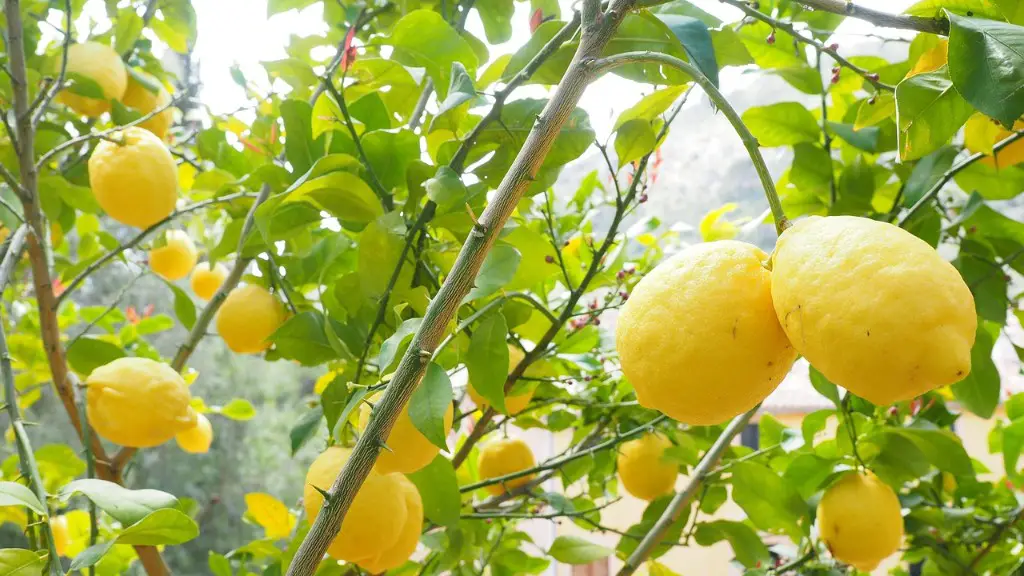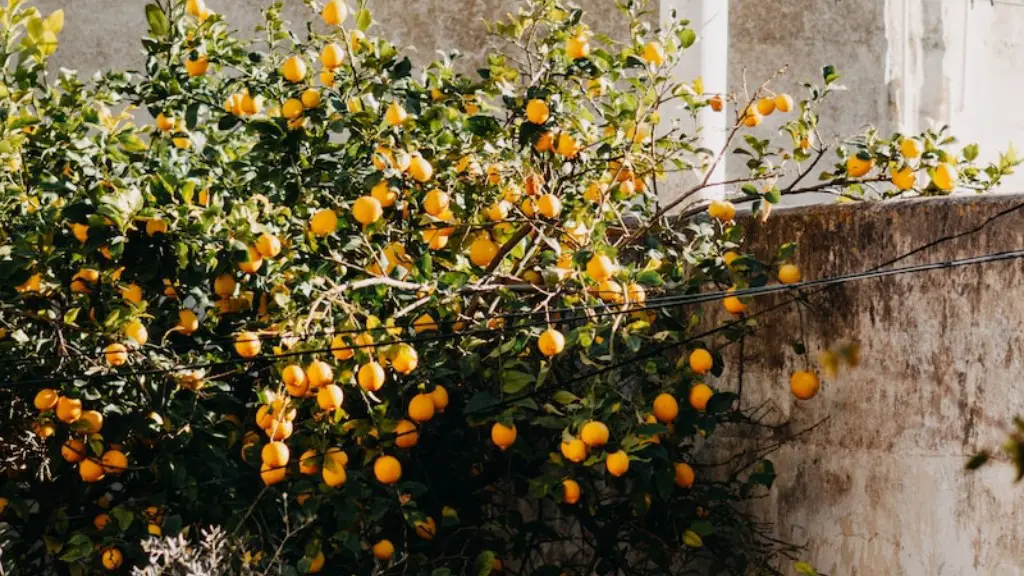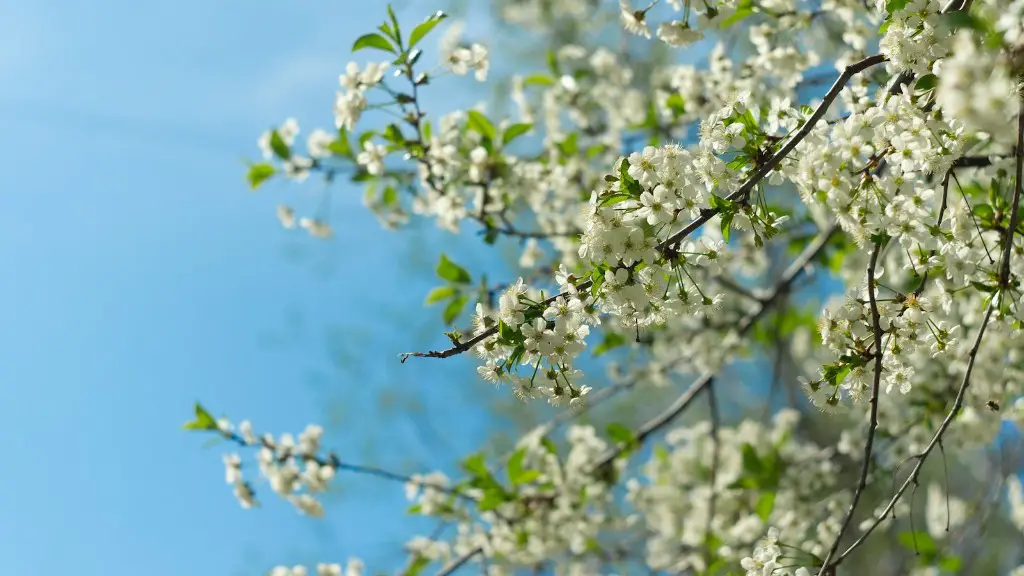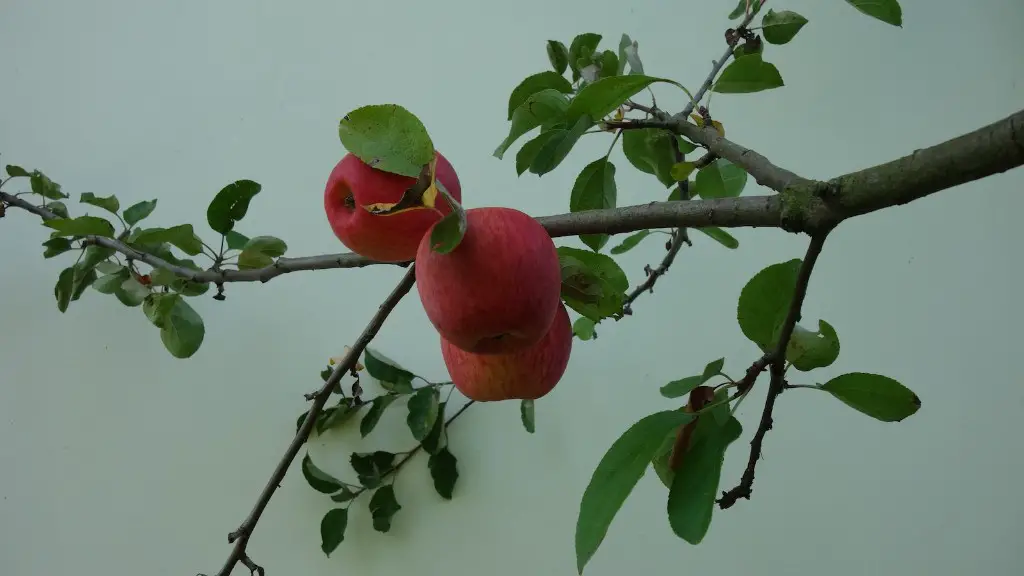The lemon tree (Citrus limon), a plant native to Southeast Asia, is a popular evergreen for indoor landscaping. It grows well in containers, making it an ideal choice for brightening up any home. The big question for many is: Will an indoor lemon tree produce fruit?
The short answer is yes. An indoor lemon tree can flourish and bear fruit, but the growth is dependent on a few factors. Adequate sunlight, the right size pot and proper watering and fertilizer are all necessary to ensure the health of the tree and the production of edible lemons.
First and foremost, a lemon tree needs abundant sunlight to produce fruit. It should be placed in a south- or west-facing window where it will receive six to eight hours of indirect sunlight each day. If the tree doesn’t receive enough sunlight, it will need supplemental lighting in order to succeed. Depending on the strength of the bulbs used, supplemental lighting may need to be used for several hours per day.
It is also important to select the right size pot. If the pot is too small, the root system won’t have enough room to spread out and the tree won’t be able to grow as vigorously. A pot that is too large, on the other hand, will retain too much water, causing the tree’s roots to rot.
A lemon tree also needs regular watering and fertilizer to keep it healthy. The soil should be kept moist, but not soggy; if allowed to dry out too much, the tree will become stressed. A balanced fertilizer should be applied to the soil about once a month to ensure that there is sufficient nutrition for the growth of the tree and its fruit.
Finally, pruning is an important component of caring for an indoor lemon tree. Pruning helps promote strong, healthy growth and can also increase the amount of fruit the tree produces. Pruning should be done at least once or twice a year.
In conclusion, an indoor lemon tree can produce fruit. However, the tree needs to be provided with adequate sunlight, the right size pot, proper watering and fertilizer, and occasional pruning in order to succeed.
Additive Care of an Indoor Citrus Tree
In order to ensure that a lemon tree is productive, there are a few additional steps that should be taken. Citrus trees need regular pest control in order to remain healthy. This can be done through applying neem oil to the tree and its surrounding soil in order to control pests like mealybugs, aphids, and scale. Citrus trees should also be provided with adequate humidity in order to keep the leaves from drying out.
In order to increase humidity, the tree can be placed on a dry pebble tray. This is simply a tray filled with pebbles that water is poured into in order to create a humid environment. Be sure not to let the roots of the tree come in contact with the water, however, as this can cause them to rot.
Finally, it is important to rotate the tree a quarter turn every two weeks to ensure that all of its leaves get an equal amount of light. This will help promote even leaf growth and prevent one side of the tree from becoming spindly. These steps combined with the necessary sunlight and care should help ensure a healthy and productive lemon tree.
Signs of a Healthy Lemon Tree
A healthy lemon tree will have bright green leaves and an even canopy. The tree should be able to grow and bear fruit without looking spindly or having weak branches. The branches should also have a firm structure, allowing them to withstand the weight of the fruit without bending. The stems should be firm and the leaves should be glossy and free of spots.
Another sign of a healthy tree is flowering. The tree should bloom with fragrant white or yellow flowers before producing fruit. The flowers will eventually turn into green, immature lemons before they turn yellow. Once they are ripe, they should be easily plucked from the branches.
It is also important to check for pests. If there is evidence of pests such as mealybugs, scale, or aphids, the tree should be treated with neem oil in order to get rid of them. Another sign of pests is if the leaves begin to curl or turn yellow.
Finally, it is important to regularly check for diseases. Common diseases of lemon trees include root rot and blight. Both of these diseases can be treated with fungicides, but identifying them early is key to preventing them from spreading.
Protecting an Indoor Lemon Tree During Winter
During winter months, it is important to take extra precautions in order to ensure the health of an indoor lemon tree. The tree should be kept in an area that is well ventilated and away from drafts. It is also important to monitor the temperature of the tree’s environment. Temperatures below 50°F (10°C) can cause damage to the tree, so if temperatures dip below that, the tree should be moved to a warmer area.
The tree should also be protected from frost, as this can damage both the leaves and the fruiting buds. If frost is forecasted for the area, the tree should be moved to a place that is warm, sheltered, and away from windows. Additionally, it is important to reduce the amount of sunlight the tree receives; if kept in direct sunlight during winter, the leaves may become scorched and damaged.
Finally, it is important to regularly check the soil and ensure it does not dry out. During winter months, the soil may take longer to dry, so it’s important to check it frequently to make sure it does not become overly saturated. The tree may also need to be watered more regularly during the winter months to ensure the soil does not dry out.
Fertilizing an Indoor Lemon Tree
Fertilizing an indoor lemon tree is important in order to ensure the tree stays healthy and produces ample fruit. The type of fertilizer used should contain a balanced ratio of nitrogen, phosphorus, and potassium. An analysis of 10-10-10 or 8-8-8 is often recommended. It is best to apply the fertilizer at least once a month during the growing season, but more frequent applications may be needed depending on the soil and the tree’s needs.
It is important to mix the fertilizer with the soil before watering the tree. This will ensure that the fertilizer is correctly absorbed. It is also important to only use a fertilizer specifically designed for citrus trees; other general-purpose fertilizers may contain chemicals that are harmful to citrus trees.
The amount of fertilizer used should also be measured carefully. Too much fertilizer can cause an imbalance of nutrients in the soil, which can lead to nutrient burn, causing the leaves to become yellow and discolored. It is best to follow the instructions on the fertilizer package, as each fertilizer will have different directions for application.
Once the fertilizer has been applied, it is important to water the tree thoroughly to help the fertilizer to spread throughout the soil. Watering also helps activate microbes in the soil, which helps ensure that the nutrients in the fertilizer are available to the tree.
Harvesting a Lemon Tree
Lemon trees can yield anywhere from a few lemons to dozens of lemons, depending on several factors. Once the lemons have reached their desired size, they should be carefully picked from the tree. It is important to pick the lemons when they are ripe, as they do not continue to ripen after being picked.
The lemons should be picked as soon as they start to turn yellow; if left on the tree too long, they will start to shrivel and eventually fall off. When picking lemons, it is important to be gentle; the lemons should be twisted off of the branch without excessively pulling or tugging, as this can cause the branch to break or become damaged.
Once the lemons have been picked, they can be stored in a cool, dry place for up to two weeks. After this time, the lemons should be used or frozen for future use. Freezing lemons is a great way to extend their shelf life and ensure that none of the delicious lemons go to waste.



